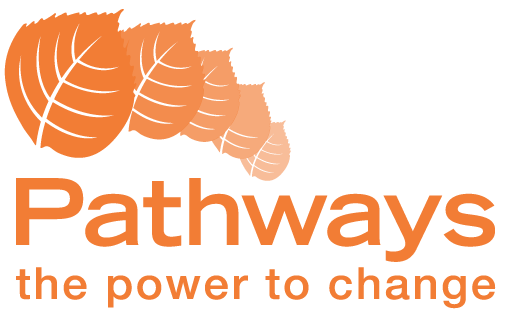When the days grow shorter and darker during fall and winter months, many people experience more than just the "winter blues." For those struggling with Seasonal Affective Disorder (SAD) alongside substance use disorders, the challenges can become overwhelming. This combination often creates a dangerous cycle that's difficult to break without professional intervention. Inpatient treatment provides a comprehensive approach that addresses both conditions simultaneously, offering hope and healing during the most challenging seasons.
Understanding the Connection Between Seasonal Depression and Substance Abuse
Seasonal Affective Disorder affects approximately 5% of adults in the United States, with symptoms typically beginning in late fall and continuing through winter months. For those already vulnerable to mental health challenges, this seasonal shift can trigger a cascade of symptoms:
- Persistent feelings of sadness or hopelessness
- Loss of interest in previously enjoyed activities
- Changes in sleep patterns (usually oversleeping)
- Fatigue and low energy
- Difficulty concentrating
- Changes in appetite (especially craving carbohydrates)
- Social withdrawal
When these symptoms emerge, many individuals turn to alcohol or drugs as a form of self-medication. This temporary relief often leads to dependence, creating a dual diagnosis situation where both conditions feed into each other:
- Substance use temporarily masks SAD symptoms
- Substances ultimately worsen depression
- Withdrawal symptoms mimic and intensify depressive symptoms
- The cycle becomes increasingly difficult to break independently
Why Self-Treatment Often Falls Short
Many people attempt to manage seasonal depression and substance use on their own through various methods:
- Light therapy boxes
- Vitamin D supplements
- Exercise regimens
- Attempting to cut back on substance use
- Over-the-counter remedies
While these approaches can be helpful components of a recovery plan, they often prove insufficient when dealing with co-occurring disorders. The neurochemical changes that occur with both conditions require more comprehensive intervention, especially when they've become intertwined over multiple seasonal cycles.
The Comprehensive Benefits of Inpatient Treatment
1. Breaking Environmental Triggers
Inpatient treatment removes individuals from environments filled with triggers for both depression and substance use. This critical separation creates space for healing without the constant pressure of:
- Access to substances
- Environmental cues that prompt use
- Isolation during dark winter months
- Work or family stressors that exacerbate symptoms
2. Integrated Treatment Approach
Perhaps the most significant advantage of quality inpatient programs is their ability to address both conditions simultaneously through integrated treatment models. This approach typically includes:
- Medically supervised detoxification
- Medication management for depression
- Individual therapy using evidence-based approaches
- Group therapy for peer support
- Light therapy and other SAD-specific interventions
- Nutritional counseling to address dietary impacts on mood
3. Structure and Routine
Seasonal depression often disrupts healthy daily rhythms, while substance use disorders further erode structured living. Inpatient programs establish consistent routines that help regulate:
- Sleep-wake cycles
- Meal times
- Physical activity
- Therapeutic engagement
- Social interaction
This structured environment helps reset biological rhythms disrupted by both conditions, particularly important for SAD which involves disruption to circadian rhythms.
4. Comprehensive Medical Support
The physical aspects of both conditions require careful medical management that outpatient settings may not adequately provide:
- Monitoring withdrawal symptoms
- Adjusting medications as needed
- Addressing nutritional deficiencies
- Managing sleep disturbances
- Treating co-occurring physical health issues
5. Building Recovery Skills in Real-Time
Inpatient settings provide immediate opportunities to practice coping skills under guidance:
- Emotion regulation techniques
- Stress management strategies
- Communication skills
- Relapse prevention planning
- Healthy alternative behaviors to substance use
When Inpatient Treatment Is Most Beneficial
While not everyone with seasonal depression and substance use issues requires inpatient care, certain situations indicate this higher level of intervention:
- Previous unsuccessful attempts at outpatient treatment
- Severe depression with suicidal thoughts
- Physical dependence requiring medical detoxification
- Limited support system at home
- Multiple co-occurring mental health conditions
- History of relapse during seasonal transitions
Transitioning Back to Daily Life
Effective inpatient programs don't just focus on the immediate treatment period but prepare clients for successful reintegration into their lives through:
- Comprehensive aftercare planning
- Connection to outpatient providers
- Seasonal relapse prevention strategies
- Family education and involvement
- Community support resources
- Environmental modifications to reduce seasonal impact
Finding Hope Through Comprehensive Care
Breaking the cycle of seasonal depression and substance abuse requires addressing both conditions with equal attention and care. Inpatient treatment offers the intensive, multifaceted approach often needed to interrupt these intertwined conditions and build a foundation for long-term recovery.
As the seasons change, you don't have to face these challenges alone. Professional treatment that addresses both the emotional impact of seasonal changes and the complexities of substance use can provide the comprehensive support needed for lasting healing and recovery.
If you or someone you love is struggling with seasonal depression and substance abuse, reaching out for professional evaluation is the first step toward breaking free from this cycle. With proper treatment and support, it's possible to experience all seasons with greater stability, health, and hope.
If you're experiencing thoughts of harming yourself, please contact the Suicide and Crisis Lifeline at 988 or text HOME to 741741 to reach the Crisis Text Line.
Disclaimer: This blog post is for informational purposes only and should not be considered medical advice. Always consult with a qualified healthcare professional for personalized guidance.


